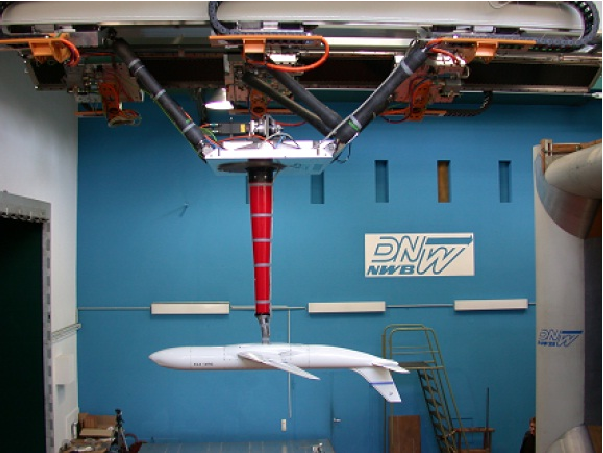SimSAC Project
Title :
Investigators :
Partner :
Sponsor :
Simulating Aircraft Stability and Control Characteristics for Use in Conceptual Design
Ghoreyshi, M., Da Ronch, A., and Badcock, K.J. (University of Liverpool, Liverpool, U.K.)
Various Academic, Research, and Industrial Partners (click here)
European Commission 6th Framework Programme on Research, Technological Development and Demonstration
Project Background
Present trends in aircraft design towards augmented-stability and expanded flight envelopes call for an accurate description of the nonlinear flight dynamic behaviour of the aircraft in order to properly design the flight control system (FCS). Hence, the need to increase the knowledge about stability and control (S&C) as early as possible in the aircraft development process in order to be "First-Time-Right" with the FCS design architecture.
FCS design usually starts near the end of the conceptual design phase when the configuration has been tentatively frozen and experimental data for predicted aerodynamic characteristics are available. Up to 80% of the life-cycle cost of an aircraft is incurred during the conceptual design phase so mistakes must be avoided (click here). Today prediction errors related to S&C result in costly fly-and-try fixes, sometimes involving loss of prototype aircraft and crew.
To meet these challenges SimSAC develops along two major axes:
creation and implementation of a simulation environment, CEASIOM, for conceptual design sizing and optimisation suitably knitted for low-to-high-fidelity S&C analysis;
an improved pragmatic mix of numerical tools benchmarked against experimental data.
More specifically, the SimSAC project contains 4 primary work elements:
development and subsequent linking of a series of disparate expert software modules into a computerised system (CEASIOM) that generates dependent parameter results for purposes of assessing S&C;
thorough benchmarking of the developed expert software tools;
application of CEASIOM to a selected number of aircraft design problems;
wind-tunnel verification of a CEASIOM-designed aircraft.
CEASIOM
The CEASIOM software is a Conceptual Aircraft design tool. It is meant to support engineers in the conceptual design process of the aircraft, with emphasis on the improved prediction of stability and control properties achieved by higher-fidelity methods than found in contemporary aircraft design tools.
CEASIOM runs under either Windows or Linux, and only requires a MatLAB® licence. CEASIOM can be downloaded from http://www.ceasiom.com/
Images
Click on the following images to enlarge the view.
Surface pressure coefficient distribution of the Ranger 2000 aircraft at α=6.0 deg and M=0.8 computed using the PMB code (Euler solution).
References
The special issue "Modeling and Simulating Aircraft Stability and Control" of Progress in Aerospace Sciences is dedicated to the results of the SimSAC project. The eight papers illustrate the range of applications that are now possible using the CEASIOM software.
Results for several test cases are given in the following publications to illustrate that the use of the CFD framework described in Da Ronch et al. in a routine manner is possible.
Refereed Journals
Da Ronch, A., Ghoreyshi, M., and Badcock, K.J., "On the Generation of Flight Dynamics Aerodynamic Tables by Computational Fluid Dynamics," Progress in Aerospace Sciences, Vol. 47, No. 8, pag. 597-620, 2011.
doi: 10.1016/j.paerosci.2011.09.001Richardson, T.S., McFarlane, C., Isikveren, A., Badcock, K.J., and Da Ronch, A., "Analysis of Conventional and Asymmetric Aircraft Configurations Using CEASIOM," Progress in Aerospace Sciences, Vol. 47, No. 8, pag. 647-659, 2011.
doi: 10.1016/j.paerosci.2011.08.008Richardson, T.S., Beaverstock, C., Isikveren, A., Meheria, A., Badcock, K.J., and Da Ronch, A., "Analysis of the Boeing 747-100 using CEASIOM," Progress in Aerospace Sciences, Vol. 47, No. 8, pag. 695-705, 2011.
doi: 10.1016/j.paerosci.2011.08.009Mialon, B., Khrabrov, A., Khelil, S.B., Huebner, A., Da Ronch, A., Badcock, K.J., Cavagna, L., Eliasson, P., Zhang, M., Ricci, S., Jouhaud, J.-C., Rogé, G., Hitzel, S., and Lahuta, M., "Validation of Numerical Prediction of Dynamic Derivatives: The DLR-F12 and the Transcruiser Test Cases," Progress in Aerospace Sciences, Vol. 47, No. 8, pag. 674-694, 2011.
doi: 10.1016/j.paerosci.2011.08.010
Presentations
Da Ronch, A., McFarlane, C., Beaverstock, C., Oppelstrup, J., Zhang, M., and Rizzi, A., "Benchmarking CEASIOM Software to Predict Flight Control and Flying Qualities of the B-747," 27th Congress of the International Council of the Aeronautical Sciences, ICAS Paper 2010-282, Nice, France, 19-24 Sep. 2010.




